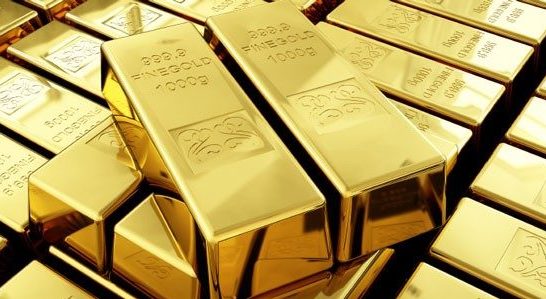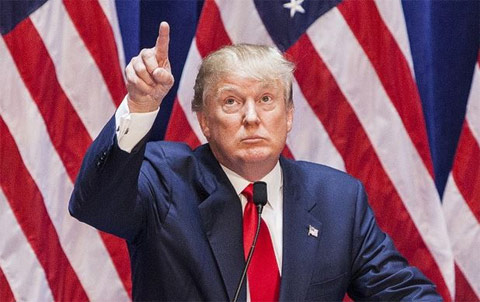
Martin Katusa was interviewed by Future Money Trends, and he’s been the one man who’s been dead-on when it comes to gold predictions! Katusa is the top name in the resource sector and not a deal goes public without crossing his desk, although most never see a check from him because he’s known as the most disciplined speculator in the venture markets.
Gold, oil, silver, uranium, the dollar, and the relationship between China, Russia, and the U.S. are discussed in the 30-min interview conducted by Daniel Ameduri, the co-founder of Future Money Trends. When it comes to gold, this is the interview to listen to! [There is also a full transcript below the video.]
Marin Katusa’s full interview below.
TOPICS IN THIS INTERVIEW:
02:15 The most interesting time for Gold in years!
06:35 Silver’s weak performance against Gold, is it time to take action?
12:05 Underestimating Russia and Iran is a tactical error
20:45 Blunt overview of the Uranium market
26:45 What is the ‘cut to kill strategy’ and how do to profit from it?
31:45 Where to find Marin’s expert insights
Marin is a New York Times best-Selling Author for the book The Colder War, How the Global Energy Trade Slipped from America’s Grasp.
Daniel: Greetings. Thank you for joining us at FutureMoneyTrends.com. I have the privilege of being able to speak to this man on a regular basis. He really is a true mentor, someone who I look up to more than anybody else in the business, and he’s about my age. I think he’s like two years older than me, and he manages the money of some of the biggest and most wealthy people I’ve met, including people in the newsletter industry – people who are paid to research, fly around the world, and find stocks for you. This is the guy they call. He’s also the person who has been the most right. I’ve seen him make major calls on oil at the top, I’ve seen him make major calls on gold at the bottom, and he’s got an impeccable gift and passion for researching stocks and waiting. I’ve never known anybody more disciplined than this person when it comes to pulling the trigger. A lot of guys will throw a lot of stock picks out there or tout their gains, but I’ve never seen anything like this. Even Doug Casey, founder of Casey Research, told me that this is the most disciplined stock picker, and you can imagine that he’s probably met tens of thousands of investors, including many, many billionaires. Our guest today has his own letter.
You can become a member for free, and you can upgrade to actually invest with him and invest in exactly what he’s buying. I highly recommend you do that, especially if you’re going to get involved in speculating because he is a master at speculating. Our guest today is Marin Katusa. He is a New York Times Best-Seller. Of all things, the book focused on Putin, which has been a big deal around here in the United States. He’s also the founder and chief editor at KatusaResearch.com. He manages some of the most successful funds in the business. Our guest is Marin Katusa. Marin, thanks for joining us today.
Marin: Thanks for having me, Dan.
Daniel: Marin, I’m so happy to be able to get a hold of you at this very moment. You’ve been, without a doubt, the most right when it comes to gold. You’ve always been cautious about it. I remember even talking to you in July of 2016 when everybody was in absolute euphoria. I went up to you and you were like, “Dan, I don’t know. With the other commodities, it’s not looking good. I don’t think this is it.” Sure enough, looking back now, we know that it was literally the high of that bull run for gold – that short bull run. So here we are, and gold’s made a big move here. What are your thoughts right now on the gold market?
Marin: I think it’s much more interesting than July of 2016. Let’s be frank: myself included, we all thought Hillary would win the election. What Trump did was phenomenal on the upset.
The complete reversal of American foreign policy, the America-first strategy, he really rattled the global markets. That’s step one.
Step two, look what’s going on in the emerging markets. During that time since the global financial crisis, the quantitative easing, or what I call the financial heroin injected with these low rates… so much debt is placed in U.S. dollars, and that’s a ticking time bomb for emerging markets because the problem with debt is you eventually have to pay it or you default.
Either way, it’s tough for what are essentially the slaves who have this debt. Remember that gold is the currency of kings but debt is the currency of slaves in the end. But with this negative interest rate market, the European banks are in big trouble. They really have no other choice.
You look at what’s going on now with Lagarde and her philosophy of lower for longer. This is a great setup for gold, but it’s also a great setup for the U.S. dollar.
And historically speaking, for gold bugs, or people who invested in gold, it was because you expected the U.S. dollar to go down. The gold was bought as a hedge to your currency depreciation. It’s done an incredible job, whether you’re in Turkey with the lira or the ruble or in Venezuela.
There are so many places in which the individuals bought gold to hedge themselves against depreciation. This is what’s majorly controversial, and what I say is I think we’re setting up an environment where the U.S. dollar will do very well and then gold will follow. Many of your viewers might say, “Wait a second, that can’t be.”
But I’ll almost take it to… my background’s math, and when you get into quantum mechanics, you say wait a second, you actually can take the square root of a negative number if you introduce imaginary variables.
That’s kind of where we are in global finance right now. With negative interest rates, the rules are being rewritten, and you can’t look at the historical past of “gold up, U.S. dollar down.” That was the trend of the last hundred years for buying gold. Moving forward, I see a setup where the euro’s going to go down, and what’s going to happen in the yuan in China and the Hong Kong dollar.
There’s some major risks globally, and I think the U.S. dollar people will flee for safety to the U.S. dollar, and also gold. Another thing; if you look at some of the charts I’ve published on my Twitter, we’re at historic lows for the amount of exposure the gold sector has to the average investor. If we just go back to the 30-year average, you’ll see a skyrocket in some of the valuations of some of these producers and developers in the gold market. We’re in a great market, and I would say that in the last 10 years, there’s not a better time to be interested in gold.
Daniel: Now, I think you are the one who told me the gold bugs were hardcore, the silver bugs were like gold bugs on crack, then you had another term for the uranium bugs.
I’m getting a lot of emails, and I’m sure you are, too, about the gold-to-silver ratio. I took a quick glance at it this morning before this call. I only see one other time where it got over 90 like this. That was back in 1991, and it only lasted for about 4 days.
Do you at all look at the gold-to-silver ratio, and does that make silver a better buy here, in your opinion? Because it is about 94 right now, and I think it reached very close to 100.
Some charts have it at like 101, other charts have it at like 99 back in ’91 for just 4 days.
Marin: Of course, you look at it… we look at hundreds and hundreds of different variables, but the market for silver is very different from the market for gold.
The supply/demand variables… if you look at the profit margins for silver, the primary production of silver versus its byproduct. If you look at the breakdown, there’s way fewer — we’re talking a fraction of the amount of — primary silver mines versus primary gold mines, meaning “I built this mine to produce gold” versus “I built this mine to produce silver.”
There’s way more of “I built these mines to produce gold” because it’s the primary byproduct. Now, metallurgy is in so many factors.
For example, 50 years ago, if you look at Copper Mountain, one of the mines I put into production with a team and I helped finance, I was on the board and one of the founders, and we produced over 300,000 ounces of gold as a byproduct. It’s not the reason we built the mine at all. It makes up less than 2% of the cash flow, but 300,000 ounces is not a small amount of gold for something that won’t necessarily factor into your economics. That’s not unique to that one mine; that’s mines across the world.
As metallurgy improved and different types of bulk-tonnage mines came into production, you see that different supply came online. You also looked at the usages. You replaced the camera with digital, but you have all this demand for the solar panels. Just like the cost for silicon for the wafers inside the panels decreased by over 90% in cost, you see that technology’s improving to where you’re actually improving the efficiency of the silver.
So, to answer your question specifically, do I believe in that metric?
No, I do not. And let me explain some background…
I remember in 2007, historically speaking, natural gas and oil traded at a 6-to-1 ratio. Now, why did it trade at that?
From an energy perspective, it was 6-to-1. If oil was $60, natural gas should be $10. That was historical. So, when I came in, I was much more interested in unconventional production, and I debated some of the biggest names in the industry in 2008 on this. I said fracking and the new technologies are going to change this because they are bringing these fracking wells.
You get gas as a byproduct, but it’s really the liquid-rich — the oil — that I want, not the natural gas. When the ratio went 15-to-1, people said: “no, no, you’ve got to buy natural gas because the ratio’s 6-to-1.”
I kept arguing that it’s kind of a stupid argument because you’re not understanding the new market reality, and I had some of these well-known market gurus, market pundits, and some of them were my mentors and guys I looked up to. And you sit there going “f*ck, man, you’ve got to change your mindset when information changes.”
This is not a religion. The market is supply and demand, and you’ve got to look at the new technologies.
This is not a religion where the Bible says this and you’ve got to stick to it, or whatever religion you follow. Unfortunately, many of the people who stuck to that got literally slaughtered, and the gas-to-oil ratio went up to, I can’t remember what the high was, but almost 80-to-1 at one point. In fact, in certain parts of the U.S. and in Canada, the gas is actually negative, meaning the producers have to pay to get rid of it.
In a lot of places, they just flare: they light it on fire as it goes into the atmosphere. We can get into that, but the whole point is that the historical ratio that people died at the stake believing in is now well accepted as not being a 6-to-1 ratio. I also believe it’s a good sentiment, but gold is the currency of kings, silver’s the currency of gentlemen, and I just think there’s fewer gentlemen in the world. Warren Buffett, when you talked about that 80 ratio in the early ‘90s, he bought 1/3 of the above-ground silver supply and they didn’t even mention it in their Berkshire Hathaway financial statements back then. It wasn’t even a dent. It wasn’t even a decimal point for them. So my point here is that there’s reasons to be bullish on silver, but I wouldn’t use that ratio as one of them. It’s interesting, but don’t go to the stake on that. Don’t bet the farm on that ratio.
Daniel: Let’s switch to Putin and Trump and Iran. I consider you an authority on Putin. I don’t know how many New York Times Best-Selling authors there are on Putin, but you’re at the top of the list.
Right now, their relationship seems to be improving now that this Russian collusion investigation is behind us here in the United States. Do you see the personalities of Trump and Putin working, and perhaps just a tie-in of what’s going on in Iran and the Strait of Hormuz.
Is this something that could potentially cause oil to spike?
And do you see any kind of cooperation between Russia, the United States, and China in regards to this potential crisis that is unfolding here with Iran?
Marin: Well, you see, it’s a great question, Dan, and when I wrote the book back in 2012 and 2013, it was based on 7 years of doing a lot of business. For example, building up and financing Cuadrilla, which was Europe’s first major shale company, and you see what gas interest in the area and you say holy crap, the Russians are very underestimated in the North American markets.
I’m Canadian, but I do a lot of business in the U.S., and people just don’t understand. In the West, we think of Russia as communist, they went bankrupt, capitalism, the Cold War the West won.
But if you look at the infrastructure built not just on oil and natural gas, but uranium and many other metals, the Russians have been quietly buying gold and spreading their sphere of influence. But as I wrote in the book, it’s not just Russia, it’s the emerging markets, and you look at what China and Russia are doing to kind of negate the American sphere of influence, and Iran is a key/critical part of this now.
Why does Iran matter?
First of all, there’s many factors. If you look historically with the Americans, Americans funded Iraq to fight Iran. Yes, Saddam Hussein was initially a puppet of America, a lot of people are surprised to hear that, and things change over the years. But Iran’s been a thorn to Israel and America for well over 30 years.
Within Iran, there’s many different factions. You have the very conservative religions, you have the religious facet, you have the modern, they want to go free. This is a very highly educated, young and growing population, and they recognize that their natural resources are a main source.
So, yes, today the Iranians are exporting oil even with the American sanctions. Now, they’re doing it creatively and they’re not going through the traditional routes that they have previously, but it’s not just the oil and natural gas.
It’s what’s going on right now with the enriched uranium. This is the key point of this, and Iran’s going to go through with this. They are not playing, and this could be the catalyst for the next major situation.
Now, you asked a key question…
Historically speaking, we thought that if a boat ever got sank and the Strait of Hormuz shut down, oil would double or triple overnight. That’s generally well-conceived because 1/3 of all seaborn oil passes through the Strait of Hormuz. We had almost that type of incident, and the price of oil that night only jumped 2%, not 20% or 200% that most would expect, so we’re in a real interesting concept.
Now, why was that?
Because technologies have changed globally, there’s access to cheap money, and there isn’t an overnight shortage of oil that many perceive. I take a very pragmatic view here, Dan, and I look at the supply and demand, and that was a serious canary in the coal mine for the oil market saying it’s about as intense as it’s ever been and the oil markets are kind of yawning at all of what’s going on. You could say as well that there’s misinformation in the market. I’ll say that maybe the market knows there’s no shortage of oil. I’ve never been a believer of peak oil, I’ve always said for almost 15 years that it’s complete bullsh*t, the whole concept was based on no new technologies coming in, and you wouldn’t believe how many emails I get going “don’t you understand peak oil or peak gold?” and I go “actually, I understand it a lot more than you do. That’s why I believe what I believe.”
I’m just not in the camp for peak oil, so hopefully I answered your question there.
Daniel: Yeah, no, you did, and just to clarify because that is something that a lot of people were diehard about. It’s like religion.
Marin: It is. You know, if you want to make money in the business, do not have religious beliefs. Do not look for information that just validates your theory.
If you want to be a successful investor or speculator, and there’s a big difference between the two, make sure you understand why you’re buying this specific commodity or stock. Understand if it’s a speculation or investment.
And also, another big mistake, Dan, I’ve been doing this for a long time, and so many guys go “I want gold and I’ve got $50,000. I’m going to buy it all today.”
Well, when you go and marry your wife, you build a relationship. It takes time, and there’s very few times where you just meet a woman and get married that day in Vegas and it works out.
Well, why will it work out like that in investing, either? You’ve got to take the long game. To be a successful investor or speculator, you’ve got to take it as like a multi-year experience. Ease into a position. I talk about the tranchematrix investing that I’ve kind of created, and ease into positions. Get to know their management teams.
You know, I hold the largest conference in the business with a partner of mine at Cambridge House, the VRIC, in January, and for all your guests who want to go, we’ll get you tickets for free. But you don’t necessarily have to go to the show. You can now watch all the videos online, but you do have to make an effort.
Never before has as much information been available online, but you have to spend time because a sector like gold has so many flakes in it, so many guys that tap into that religious belief, tap into the whole “the U.S. dollar’s corrupt and it’s going to zero, so buy what I call the gold guns and ammo” theory.
Again, it’s completely bullsh*t. Never in the world has there been a better time to be alive, and I take the opposite view of most gold bugs, saying I don’t know… Dan, how do you get paid? Do you collect yuan or rubles or the Mexican peso, or do you want U.S. dollars?
Daniel: U.S. dollars, and as you travel, and you know, you’ve traveled to over 100 countries, a lot of countries will take the U.S. dollar in preference over their own home currency.
Marin: You know, I’ve got a beautiful place out in Europe on the water and when we did a bunch of rentals I asked the guys “how do you want to get paid?” and it wasn’t in the local currency.
When you’ve been around the world traveling, you look at Russia… a lot of people don’t realize this, but this is one of the places with the most $100 U.S. bills in currency, in physical $100 bills. Why the hell does Moscow have so many? Well, the Russians are damned smart, okay? Do not underestimate them.
There’s this misbelief that the Chinese are technology thieves and stupid and that Russians are not that sophisticated. In this global world, in order to survive in any country at a financial level, these are smart people across the board, and the West is almost at a disadvantage because of their belief that they have an advantage over others.
Daniel: Marin, on uranium, many people have taken positions over the last few years with anticipation that there would be an inevitable market just from supply and demand, however, as you know, this month Trump could potentially make a major announcement on how the U.S. will consume its uranium.
Currently, I think 50 million pounds a year are used or consumed by the United States and like 2.5 million pounds are produced. So basically, we’re importing all of it. Over the next 30 days, do you see what the White House is going to do or will potentially do as being that catalyst for the uranium bull market?
Marin: Okay, again, I’m going to piss off a lot of people because the uranium bugs are silver bugs on steroids, and that tells you something because the silver bugs are gold bugs on steroids.
These are religious fanatics saying that you know, uranium has to go to $75.
Let’s just go back… in 2015, I was asked to give the keynote at the World Nuclear Fuel Market in Paris. That’s a conference where the producers of the metal, the refiners of the metal uranium, and the consumers, the nuclear reactors, buy the metal. That’s where the contracts are all done. So they brought me out to give my thoughts, and I said, first of all, there’ll be a two-market system, kind of like how we have for oil: WTI, Brent pricing, there’s different prices of oil globally.
There’s a Canadian price, the American Western Texas Intermediate WTI, the European Brent. I see a bifurcated market where the North Americans will have one price and the Russian price will be set for the emerging markets.
Secondly, I said, the elephant in the room is Kazatamprom, and they produce over 40% of the world’s primary uranium production.
Now, uranium has secondary production from either down-blending the bombs or as a byproduct from other mines. That’s secondary production.
What I said was what people need to think about is, and I talk about this in my book, I have a whole chapter about this stuff, what you’re referring to is a Section 232, where the uranium market in the U.S. has gone from the world’s largest producer just 30 years ago, producing over 30 million pounds, to producing less than 1 million pounds. Not 2.5, 1 million pounds.
So, the Americans import over 90% of what they consume.
To put it into easier-to-understand numbers, one in every five homes in America is powered by nuclear energy.
Now, one in every ten homes is powered by former Soviet Union-developed resources. One in every ten homes. Now, if you understand anything about the Soviet assets… Kazakhstan, it’s Russian (Cyrillic); when I went out there 14-15 years ago looking at the assets, the Kazakhs went from a million pounds of production to over 60 million pounds in less than 20 years. Imagine a market that has all of OPEC and Russia and still more percentage-wise of the global market. That’s what Kazatamprom has.
Now, I have a very different take than almost every other talking head in the sector, and I talked about this at my conference in January. I published to my subscribers saying “guys, calm down.” There’s no reason to go absolutely crazy about these uranium stocks.
First of all, I’ve seen three uranium bull markets, and so many of these guys will flog some piece-of-sh*t project in Africa that is in an AK-47 region[MS2] where the reality is that it sounds kind of cool to go out there, and I’ve done it. I’ve put on body armor to go to projects when I was younger, and by the time you develop it, you realize that the country and local warlords are going to take most of the profits from this if you even get to develop it. That’s bull market stuff.
If those projects are rarely ever discovered, they’re recycled properties, meaning that some loyal company 40 years ago discovered it and they’ve had 10 different owners over the last 40 years. Stay away from those projects. If they couldn’t work at $130 uranium, why are they going to work in today’s market?
Secondly, I’ve always stated to stick to U.S. production. It’s still the largest consumer of uranium in the world. Look for those that are built and permitted. Permitting a uranium mine is harder than any other metal in the world, so stick with a permitted and built one, and most importantly, unhedged.
So many of these companies were financially forced to hedge themselves in a crappy uranium market. I say stay away from those.
You want to be in an area that is permitted, built, unhedged, and most importantly, I think it’s going to be based off of a quota system, not a tariff system. What I see happening on July 12th, July 13th, when it comes announced… first of all, this is government, they’re never on time, so it could be delayed.
But what I see is they start out with—what I talk about publicly is somewhere between 5-10% has to be sourced in American production, so if it’s 55 million pounds per year, somewhere between 2.5-3 million pounds the first year, and then it escalates every year for 5-10 years to get to about 25%.
Now, the group that pushed this Section 232 at my conference in January said “man, we actually got the idea from your book about doing the Section 232.”
So many of the people say “no, no, no, that’s going to be a tariff system and uranium’s going to go to $60.” It doesn’t need to go to $60 for you to make a lot of money. I think the U.S. number will probably start out at $50-55-60 for a certain percentage of U.S. production, but that won’t create all of the stuff in Africa at that price. The third part of my thesis, that the market hasn’t realized, is if I was Kazatamprom, I would do what I call a “cut to kill” strategy.
A “cut to kill” strategy is to go after the guys like Cameco, that have production in Kazakhstan.
They own 40% of Inkai, which is a great project. Kazatamprom owns 60%. Say “you know what? We want 100% of this domestic market.” And I think Cameco is vulnerable in this market because what is Cameco, essentially? Well, they’re the world’s largest producer of uranium in what I call the “free world,” or the West.
They’re the West’s largest producer. Up until Kazatamprom, they were the largest. But so many of their agreements are really contracts. They shut down McArthur Mine, which was a world-class mine. It was probably what, the second-lowest-cost producer, the second-largest mine in the world for production, and they just shut it down because it didn’t make sense at $25 uranium.
Now, if one of the best mines in the world doesn’t make money at current prices, what’s that tell you about the current market? The Kazakhs can make money because they have the advantage of their currency – their Tenge. They produce in their local currency and they sell in U.S. dollars. Now, people say “well, Cameco has 40% of Inkai.” That’s fair enough, but they have Cigar Lake as their main mine. And some of the assets that Cameco bought just aren’t going to work. They’re just not going to fly.
And I think that after these contracts expire, why would Kazatamprom allow Cameco to just buy on the open market and sell at a higher price when they’re the main producer of that material? I think Cameco’s vulnerable here, and I’d want to stick with permitted, built unhedged U.S. production. Stay away from AK-47 nations and always respect the competitor. When you’re in the West, investing in U.S.- or Canadian-listed companies, you have to understand what Kazatamprom’s strategy is. These are smart, smart guys with world-class assets and they are the elephant in the room.
They are the biggest player, they are the center of the chess board, so I take a very different view, and in my opinion, the best way to play uranium over the next 5 years is through Uranium Royalty Corp., which is going to enable these companies without taking any of the production risk, permitting risk. There’s so many risks to mining, but they just provide capital and take a fixed stream or royalty off of production. That’s the way I’m playing the uranium market, and I’ve been doing this almost 20 years in the uranium market.
Daniel: Uranium Royalty Corp. is not public yet, correct?
Marin: No, it’s not.
Daniel: Okay, when do you anticipate that being tradable for the listeners?
Marin: I really don’t know. It could be later this year or early next year. Sometime between now and next summer. But the way to play it is if you look at some of the great royalty companies, like Wheaton Precious Metals or Franco Nevada… you know, Pierre Lassonde’s a friend, and I got to know him through the industry and going to dinner with him, but all of their best assets, the deals that they did that created the true value for investors, weren’t when gold was $1,400. It was when gold was $300.
And that’s the market we’re in with uranium, and I’m saying, guys, uranium’s going to stay low for another 12 months, 24 months, and I’m the main financier and investor in Uranium Royalty Corp. And the strategy is to take advantage of this market without getting stuck at producing at low prices and do exactly what Franco Nevada did in gold, but for the uranium market.
It’s not just for primary producers, it’s also secondary production. Now, if you have a longer-term horizon, for me that’s 3-5 years, you’ll do very well. But the problem with our industry and so many guys who come and pitch these deals is, you know, “buy my newsletter now; you’re going to make 10x your money.” That’s not how it works. You have to have a long strategy and invest in the top people.
People are the absolute most critical thing in this industry, and in the uranium market, there’s maybe a handful of players that you need to pay attention to. When the uranium market gets hot, don’t worry. These entrepreneurs will come to the market and all these garbage projects will come back on and be promoted. That’s when you want to sell your investments that you’re buying now.
Daniel: Marin, you’ve been very generous with your time. I had a last question of what you’re focusing on in your investing right now, but what I’d like to do is perhaps let’s reconnect in about 3-4 weeks and maybe we can go over some investment strategies, and maybe even a few picks if you’re willing.
Marin: Always a pleasure, Dan. I look forward to it.
Daniel: Alright, everybody, make sure you go to KatusaResearch.com right now and subscribe. You can get this information for free today. Marin gets invited to be the keynote at family wealth offices… like I said, he helps manage some very wealthy investors. I can’t publicly mention their names, but they’re billionaires, so everyone check out KatusaResearch.com. Do yourself that favor because you’re going to want to position yourself right now, and there’s a lot of the things Marin is looking at and speculating in, but you want to do it with Marin. Don’t go out there on your own and do it; I guarantee you’ll lose money. Marin, thanks for joining us today. I appreciate your time.
Marin: Take care, man.
Interviewer, Daniel Ameduri is the author of the book Don’t Save For Retirement: A Millenial’s Guide To Financial Freedom.
*Transcript republished with permission from Future Money Trends.












Only smart people will go to gold and similar. Most of the sheep will be defenseless, financially.
TL;DR version:
BUY GOLD DAMN IT!!!
His name is Marin not Martin. Sheesh.
He worked for Doug Casey for years until Stansberry bought them. He has been saying the same thing for the 20 years I have been a subscriber. Eventually, he will be correct but in the investing world, 20 years early is called being wrong.
In a 1 + 1 = 2 world the author is correct. Unfortunately the price of gold is manipulated by the futures market and paper gold.
Exactly
The gold to silver ratio is way off.
Silver should be about $30 an ounce at a minimum. The banks are keeping it artificially low for now.
Even the Constitutional dollar, backed in metals, is artificially pegging them to an arbitrary price point. It works the same way, with any commodity or financial product.
I would take some time to learn about his alleged strategies, when more bandwidth (for video) is available, over these lines.
But, he “forgets” (omits) that all these socalled variables, in his equations, are actually market controls. These algebraic letters, are just blanks. Fill in the box. They are knowable, short of an act of God. Because, the state explicitly announces which corporate welfare grants will be made to which cronies.
If any stock guru babble has any intelligible value, they are talking about a law. and a market maker, and being obtuse about public info.
John, I probably don’t know as much about metals as most but your statement would depend on the actual ratio. My question is, what is the actual ratio? And is that physical or are you including paper in as well? I did some reading a few years back and learned that the physical ratio was 16 to 1. If that’s still the case then I think silvers value is a bit more than $30.
So gold is running $1450 an ounce, but platinum, (Which is 20 times rarer than gold), is running $870.. I think gold is over bought, and in the future gold bugs will get their wings singed.